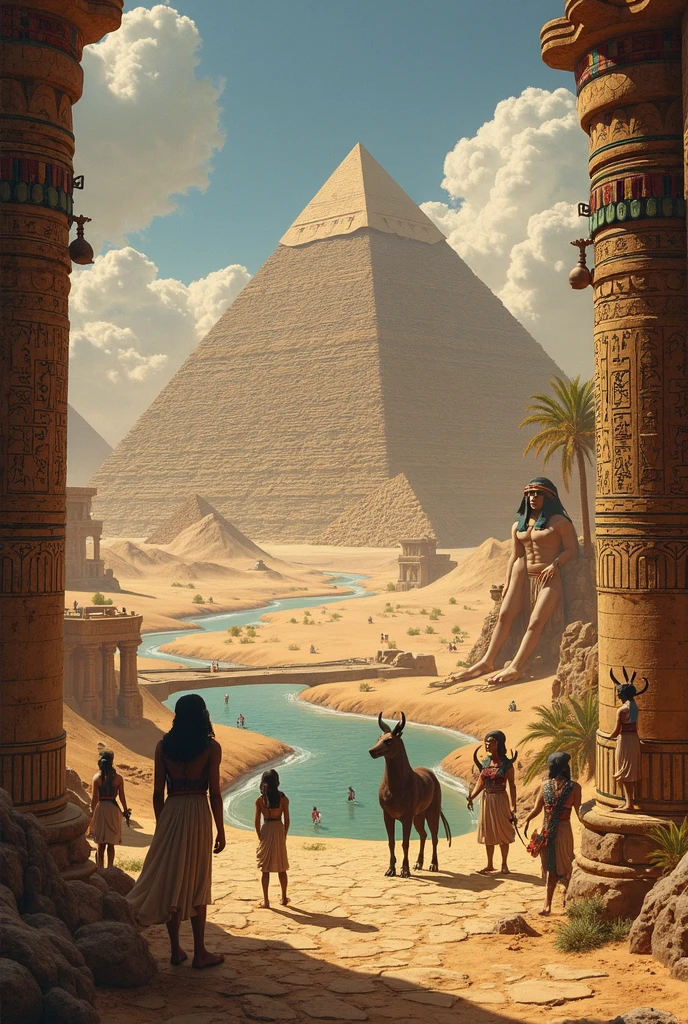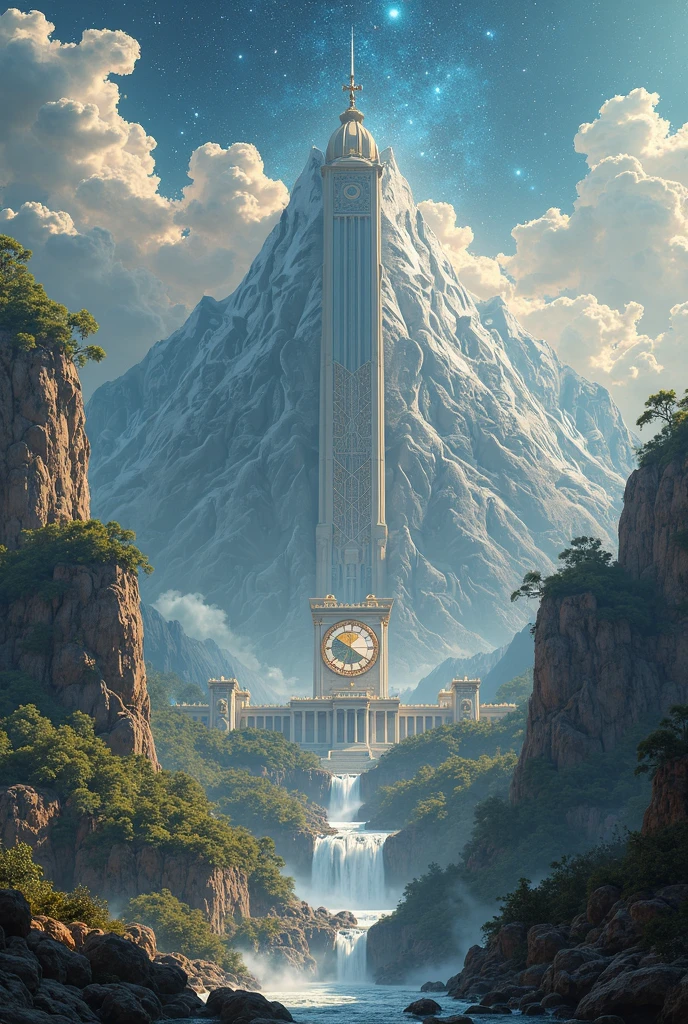Tibetan Mythology: A Journey Through the Himalayas
The rich tapestry of Tibetan mythology is deeply intertwined with the spiritual and cultural heritage of the Himalayas. From the heroic deeds of Gesar to the mysterious Yeti, these stories reflect the beliefs of both the indigenous Bön religion and Tibetan Buddhism. This article explores the epic tales, deities, and legends that define this mystical tradition.
The Legend of King Gesar
Gesar is the central figure in Tibetan mythology, celebrated as a divine warrior-king who battles evil forces to restore harmony. His epic, the Epic of Gesar, is one of the longest oral traditions in the world, passed down through generations by bards and storytellers.
Key Aspects of the Gesar Epic
- Divine Birth: Gesar is believed to be an incarnation of a celestial being sent to Earth to vanquish demons.
- Heroic Quests: His adventures include battles against supernatural foes and the unification of warring tribes.
- Spiritual Teachings: The epic blends Buddhist and Bön philosophies, emphasizing wisdom and compassion.
| Character | Role in the Epic |
|---|---|
| Gesar | Heroic king and divine warrior |
| Drukmo | Gesar’s loyal wife and advisor |
| Ling Gesar | Alternative name for Gesar in some versions |
Bön: The Indigenous Religion of Tibet
Before Buddhism’s arrival, the Bön religion shaped Tibetan spirituality. Its mythology includes a pantheon of deities, spirits, and rituals aimed at harmonizing the natural and supernatural worlds.
Major Bön Deities
- Shenlha Okar: The supreme deity of compassion and wisdom.
- Yungdrung Bon: The eternal swastika, symbolizing the unbroken teachings of Bön.
- Dralha: Warrior spirits who protect practitioners.
The Mystery of the Yeti
The Yeti, or “Abominable Snowman,” is a legendary creature deeply rooted in Himalayan folklore. Described as a towering, ape-like being, the Yeti is both feared and revered in Tibetan culture.
Yeti in Tibetan Beliefs
- Guardian of the Mountains: Some believe the Yeti protects sacred sites.
- Symbol of the Unknown: Represents the mysteries of the Himalayas.
- Modern Sightings: Expeditions continue to search for evidence of its existence.
Deities in Tibetan Buddhism
Tibetan Buddhism incorporates numerous deities, each representing different aspects of enlightenment and protection.
| Deity | Role |
|---|---|
| Avalokiteshvara | Bodhisattva of compassion |
| Tara | Female deity of protection and compassion |
| Mahakala | Fierce protector of the Dharma |
The Epic Tradition of Tibet
The oral and written traditions of Tibet, including the Epic of Gesar, serve as cultural cornerstones. These stories are not just entertainment but also spiritual teachings.
Features of Tibetan Epics
- Oral Transmission: Many epics are recited by memory.
- Moral Lessons: Teachings on ethics, bravery, and wisdom.
- Cultural Preservation: Keeps ancient traditions alive.
For more on Tibetan culture, explore Himalayan Art, Tibetan Buddhist Encyclopedia, and Bön Foundation.
Descubre más artículos fascinantes en nuestra web y síguenos en facebook.com/zatiandrops.
The Sacred Geography of Tibetan Mythology
The Himalayas are not just a physical landscape but a spiritual realm in Tibetan mythology. Mountains, lakes, and rivers are considered dwelling places of deities and spirits. Mount Kailash, for instance, is revered as the abode of Shiva in Hinduism and the center of the universe in Bön tradition.
Sacred Sites in Tibetan Lore
- Lake Manasarovar: Believed to cleanse sins and grant enlightenment.
- Mount Meru: The cosmic axis in Buddhist and Bön cosmology.
- Tsangpo Gorge: A hidden paradise linked to Shambhala legends.
The Role of Oracles and Divination
Tibetan culture places great importance on oracles, who serve as intermediaries between humans and the divine. The Nechung Oracle, for example, has guided Tibetan leaders for centuries.
Types of Tibetan Divination
| Method | Purpose |
|---|---|
| Mo Divination | Uses dice to answer spiritual questions |
| Mirror Scrying | Reveals hidden truths through reflective surfaces |
| Dream Interpretation | Deciphers messages from deities or ancestors |
Demons and Malevolent Spirits
In Tibetan mythology, demons (like Mara) symbolize obstacles to enlightenment. Rituals and protector deities are invoked to subdue these forces.
Notorious Tibetan Spirits
- Gyalpo Spirits: Haughty ghosts that possess humans.
- Dön: Invisible beings causing misfortune.
- Sinmo: A demoness whose body forms Tibet’s geography.
The Myth of Shambhala
The hidden kingdom of Shambhala is a central theme in Tibetan Buddhist prophecy. It’s described as a utopia where wisdom and peace prevail, accessible only to the pure-hearted.
Shambhala in Texts
- Kalachakra Tantra: Predicts a future king of Shambhala will end worldly suffering.
- Bön Texts: Refer to it as Olmolungring, a land of immortality.
Animal Symbolism in Tibetan Myths
Animals play symbolic roles in Tibetan lore. The snow lion, for example, represents fearlessness, while the garuda symbolizes the triumph over delusion.
| Animal | Symbolic Meaning |
|---|---|
| Snow Lion | Power and joy |
| Garuda | Freedom from ignorance |
| Wind Horse (Lungta) | Good fortune and vitality |
The Ritual of Sky Burial
One of Tibet’s most enigmatic practices, sky burial, reflects mythological beliefs about the soul’s journey. Corpses are offered to vultures, seen as dakinis (celestial beings) carrying the deceased to heaven.
Symbolism Behind Sky Burial
- Impermanence: Reinforces Buddhist teachings on the transient nature of life.
- Compassion: The act nourishes living creatures.
The Influence of Astrology
Tibetan astrology blends Indian, Chinese, and indigenous systems. It’s used to determine auspicious dates, diagnose illnesses, and predict future events.
Key Components of Tibetan Astrology
- Parkha (Eight Trigrams): Governs spatial and temporal calculations.
- Me-wa (Nine Magic Squares): Used for divination and healing.
Legendary Heroes Beyond Gesar
While Gesar dominates Tibetan epics, other heroes like Milarepa—a poet-saint who overcame black magic—are equally revered.
Milarepa’s Trials
- Early Misdeeds: Used sorcery for revenge before seeking redemption.
- Spiritual Asceticism: Meditated in caves, surviving on nettle soup.
For deeper insights, visit Tibet.org, Shambhala Publications, and Himalayan Institute.
Descubre más artículos fascinantes en nuestra web y síguenos en facebook.com/zatiandrops.
The Cosmic Dance of Tibetan Deities
In Tibetan Buddhist art, deities are often depicted in dynamic poses known as the cosmic dance, symbolizing the interplay between wisdom and compassion. The most famous example is Chakrasamvara, a wrathful deity embracing his consort, representing the union of method and wisdom.
Significant Tantric Deities
| Deity | Symbolism |
|---|---|
| Vajrayogini | Embodiment of bliss and emptiness |
| Yamantaka | Conqueror of death |
| Hevajra | Represents the indivisibility of bliss and void |
The Legendary Kingdom of Zhangzhung
Before the rise of the Tibetan Empire, the ancient kingdom of Zhangzhung flourished in western Tibet. This civilization was the cradle of Bön religion and left behind mysterious ruins like the Khyunglung Ngülkhar (Silver Palace of the Garuda Valley).
Key Archaeological Sites
- Mount Kailash: Considered the spiritual center of Zhangzhung
- Guge Kingdom: Later Buddhist kingdom preserving Zhangzhung traditions
- Dzong Fortresses: Stone structures with unknown origins
The Mystical Practice of Dream Yoga
Dream yoga (Milam) is an advanced Tibetan Buddhist practice that transforms sleep into a spiritual path. Practitioners learn to maintain awareness during dreams and recognize them as manifestations of mind.
Stages of Dream Yoga
- Recognition: Becoming aware you’re dreaming
- Transformation: Altering dream elements at will
- Liberation: Realizing the dream’s empty nature
The Sacred Language of Mantras
Tibetan Buddhism places great power in mantras, sacred syllables believed to contain the essence of enlightenment. The most famous is Om Mani Padme Hum, associated with Avalokiteshvara.
| Mantra | Deity Connection |
|---|---|
| Om Ah Hum | Purifies body, speech, and mind |
| Om Tare Tuttare Ture Soha | Green Tara mantra |
| Gate Gate Paragate Parasamgate Bodhi Svaha | Heart Sutra mantra |
The Hidden Valley Tradition
Tibetan Buddhists believe in beyul – hidden valleys that serve as sanctuaries during times of crisis. These sacred lands, like Beyul Pemako, are said to reveal themselves only to destined practitioners.
Characteristics of Beyul
- Geographical Miracles: Shifting landscapes that confuse outsiders
- Longevity: Inhabitants are said to live exceptionally long lives
- Terma Sites: Often contain hidden spiritual treasures
The Warrior Tradition of Tibet
Beyond spiritual figures, Tibetan history celebrates warrior saints like Padmasambhava, who subdued local spirits to establish Buddhism. His eight manifestations represent different aspects of enlightened activity.
Padmasambhava’s Manifestations
| Form | Attribute |
|---|---|
| Guru Tsokye Dorje | Subduer of demons |
| Guru Shakya Senge | Teacher of dharma |
| Guru Nyima Ozer | Radiant wisdom |
The Living Tradition of Tibetan Opera
Lhamo, Tibetan opera, brings mythological stories to life through colorful masks, elaborate costumes, and distinctive vocal techniques. Performances often last several days and serve both entertainment and religious purposes.
Famous Lhamo Stories
- Drimey Kunden: Tale of perfect generosity
- Nangsa Obum: Story of a princess who becomes a nun
- Drowa Sangmo: The deer maiden
For further exploration, visit Tibetan Language Institute, Himalayan Crafts, and Sacred Tibetan Texts.
Descubre más artículos fascinantes en nuestra web y síguenos en facebook.com/zatiandrops.
The Sacred Art of Thangka Painting
Thangka paintings are intricate visual representations of Tibetan Buddhist cosmology, serving as meditation aids and teaching tools. These scroll paintings follow precise geometric rules to depict deities, mandalas, and spiritual scenes.
Elements of Traditional Thangka
| Component | Significance |
|---|---|
| Central Deity | Main figure representing specific enlightenment qualities |
| Surrounding Figures | Attendants, protectors, and lineage masters |
| Mandala Border | Cosmic diagram of the spiritual universe |
The Mythical Origins of Tibetan Medicine
Tibetan traditional medicine traces its roots to the legendary physician Yuthok Yonten Gonpo, who received teachings directly from the Medicine Buddha. The foundational text, Gyüshi, blends spiritual and physical healing methods.
Three Humors in Tibetan Medicine
- Lung (Wind): Governs movement and nervous system
- Tripa (Bile): Controls metabolism and body heat
- Beken (Phlegm): Maintains structural integrity
The Secret History of Terma Treasures
Terma are hidden spiritual treasures concealed by Padmasambhava and other masters to be discovered at appropriate times. These can be physical objects or mind treasures revealed through visions.
Famous Terma Discoveries
- The Tibetan Book of the Dead: Revealed by Karma Lingpa in the 14th century
- Longchen Nyingthig: Heart essence teachings discovered by Jigme Lingpa
- Five Treatises of Maitreya: Said to originate from the future Buddha
The Warrior Deities of Tibet
Tibetan Buddhism features numerous dharma protectors (Dharmapalas) who embody fierce compassion. These wrathful beings, often depicted with flaming hair and skull garlands, defend the teachings against obstacles.
| Protector | Special Attributes |
|---|---|
| Palden Lhamo | Female protector riding through sea of blood |
| Begtse | Mongolian war deity converted to Buddhism |
| Dorje Shugden | Controversial protector with political history |
The Mystical Practice of Tummo
Tummo (inner fire) yoga is an advanced Tibetan practice that generates bodily heat through breath control and visualization. Practitioners can reportedly dry wet sheets in freezing temperatures through this technique.
Stages of Tummo Practice
- Vase Breathing: Special pranayama technique
- Visualization: Imagining flames along the central channel
- Dissolution: Merging with the experience of bliss-void
The Legend of the Rainbow Body
Advanced Tibetan practitioners are said to achieve the rainbow body (jalü), where the physical body dissolves into light at death, leaving only hair and nails behind. This phenomenon represents the ultimate realization of the body’s illusory nature.
Documented Cases
- Togden Ugyen Tendzin: 20th century practitioner who attained rainbow body
- Khenpo Acho: Recent example from Kham region
- Shardza Tashi Gyaltsen: Bön master who demonstrated this attainment
The Sacred Dance of Cham
Cham dances are elaborate ritual performances where monks embody deities through precise movements and costumes. These dances purify the environment and transmit esoteric teachings through movement.
| Cham Dance Type | Purpose |
|---|---|
| Black Hat Dance | Subjugation of negative forces |
| Skeleton Dance | Meditation on impermanence |
| Deer Dance | Celebration of Padmasambhava’s deeds |
The Living Tradition of Sand Mandalas
Tibetan monks create intricate sand mandalas over days or weeks, only to ritually destroy them, teaching the impermanence of all phenomena. Each colored grain represents aspects of the enlightened mind.
Stages of Mandala Creation
- Consecration: Blessing of space and materials
- Outline: Precise geometric measurements
- Filling: Application of colored sands
- Dissolution: Ritual dismantling
Explore more at International Academy of Traditional Tibetan Medicine, Himalayan Art – Protector Deities, and Sacred Sand Mandala Project.
Descubre más artículos fascinantes en nuestra web y síguenos en facebook.com/zatiandrops.
The Ancient Practice of Soul Retrieval
In Tibetan shamanic traditions, la-guk (soul retrieval) is performed when a person’s vital essence becomes lost or stolen. This practice, rooted in Bön religion, involves elaborate rituals to restore spiritual wholeness.
Signs of Soul Loss
- Chronic fatigue without medical cause
- Emotional numbness or dissociation
- Recurring nightmares of being chased or falling
The Legend of the Wish-Fulfilling Jewel
The Cintamani is a mythical gem in Tibetan lore that grants enlightenment and material abundance. Some believe it’s hidden in Shambhala, while others claim it’s the Buddha’s tooth relic enshrined in Lhasa.
| Jewel Attributes | Symbolic Meaning |
|---|---|
| Radiates rainbow light | Manifestation of Buddha nature |
| Changes size at will | Adaptability of enlightened mind |
| Cannot be stolen | Inalienability of wisdom |
The Sacred Dzi Beads
Dzi beads are ancient agate stones with distinctive eye patterns, revered across the Himalayas. Tibetan legends say they were created when celestial beings shot arrows of compassion to earth.
Common Dzi Patterns
- Single eye: Protection from evil
- Nine eyes: Supreme fortune and power
- Tiger stripes: Courage and strength
The Oracle Lakes of Tibet
Certain high-altitude lakes like Lhamo La-tso serve as visionary mirrors where trained monks see future events. The Dalai Lama’s discovery traditionally involves visions in these sacred waters.
| Oracle Lake | Associated Prophecy |
|---|---|
| Lhamo La-tso | Reincarnation of Dalai Lamas |
| Yamdrok Lake | Protection of Lhasa valley |
| Nam-tso | Reveals karmic connections |
The Mythical Kingdom of Uddiyana
Believed to be the homeland of Padmasambhava, this vanished kingdom represents the pure land where tantric Buddhism first flourished. Some scholars associate it with Pakistan’s Swat Valley.
Characteristics of Uddiyana
- Floating palaces suspended in space
- Dakini gatherings in charnel grounds
- Self-arising tantric scriptures in trees
The Secret Language of Dakinis
Dakini script is a mystical alphabet appearing in visions and terma discoveries. Its swirling characters are said to contain encoded wisdom that unfolds in the practitioner’s mind.
Features of Dakini Writing
- Non-linear: Can be read from any direction
- Multi-dimensional: Reveals deeper meanings over time
- Self-liberating: Understanding dissolves the text
The Living Mountain Gods
Tibet’s peaks are considered conscious deities who interact with humans. Mount Nyenchen Thanglha, for example, is worshipped as a white-haired giant riding a white horse.
| Mountain Deity | Domain |
|---|---|
| Nyenchen Thanglha | Northern Tibet protector |
| Amnye Machen | Amdo region guardian |
| Kawakarpo | Pilgrimage site in Yunnan |
The Time-Honored Butter Sculpture Tradition
Tibetan monasteries create elaborate butter sculptures for religious festivals, blending art with spiritual practice. These ephemeral masterpieces symbolize the transience of material existence.
Butter Sculpture Themes
- Flora and fauna: Representations of pure lands
- Mandalas: Three-dimensional sacred geometry
- Deity figures: Temporary abodes for blessings
Learn more at Tibetan Spirit, Dzi Bead Research, and Himalayan Voices.
Descubre más artículos fascinantes en nuestra web y síguenos en facebook.com/zatiandrops.


